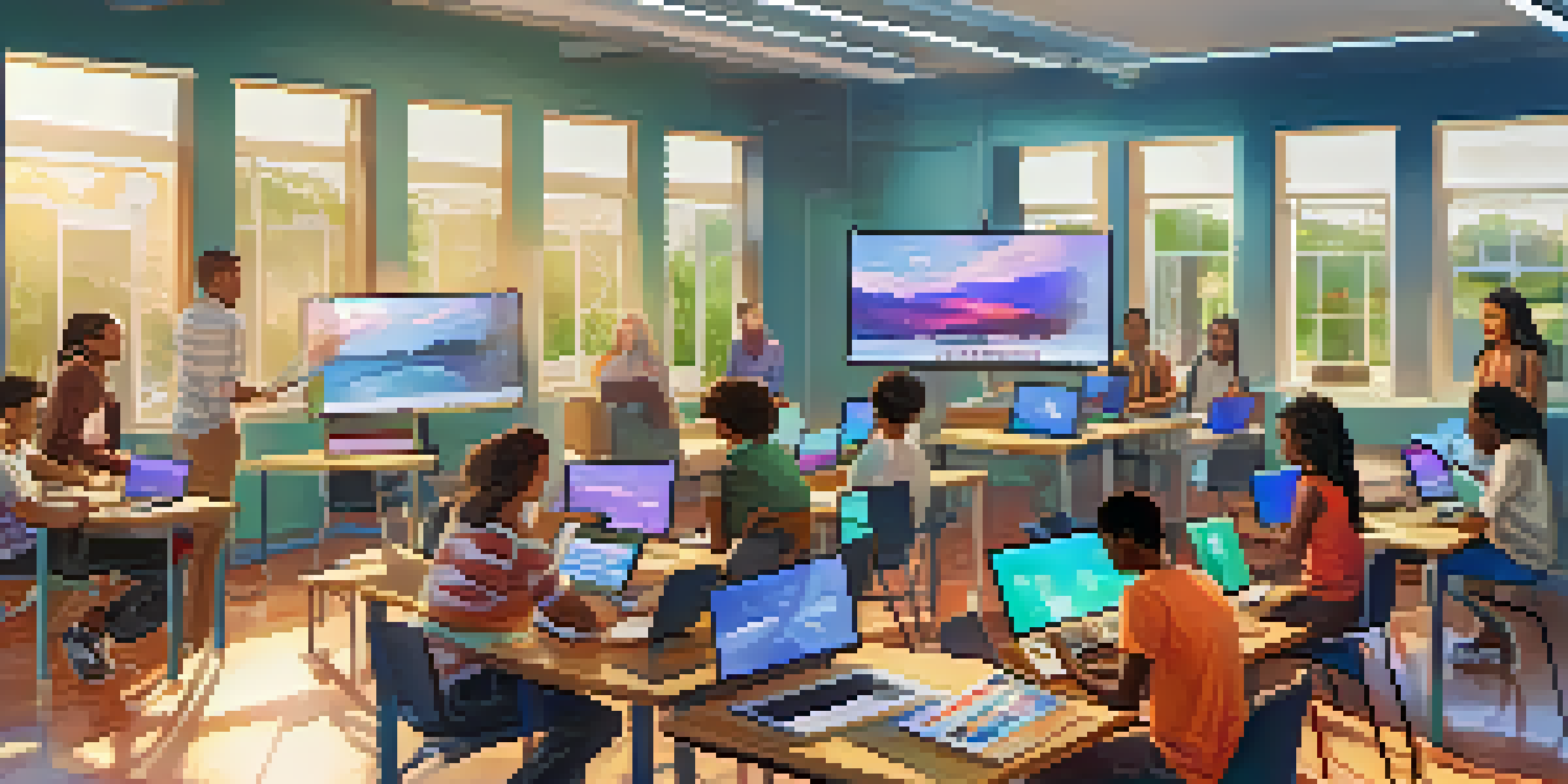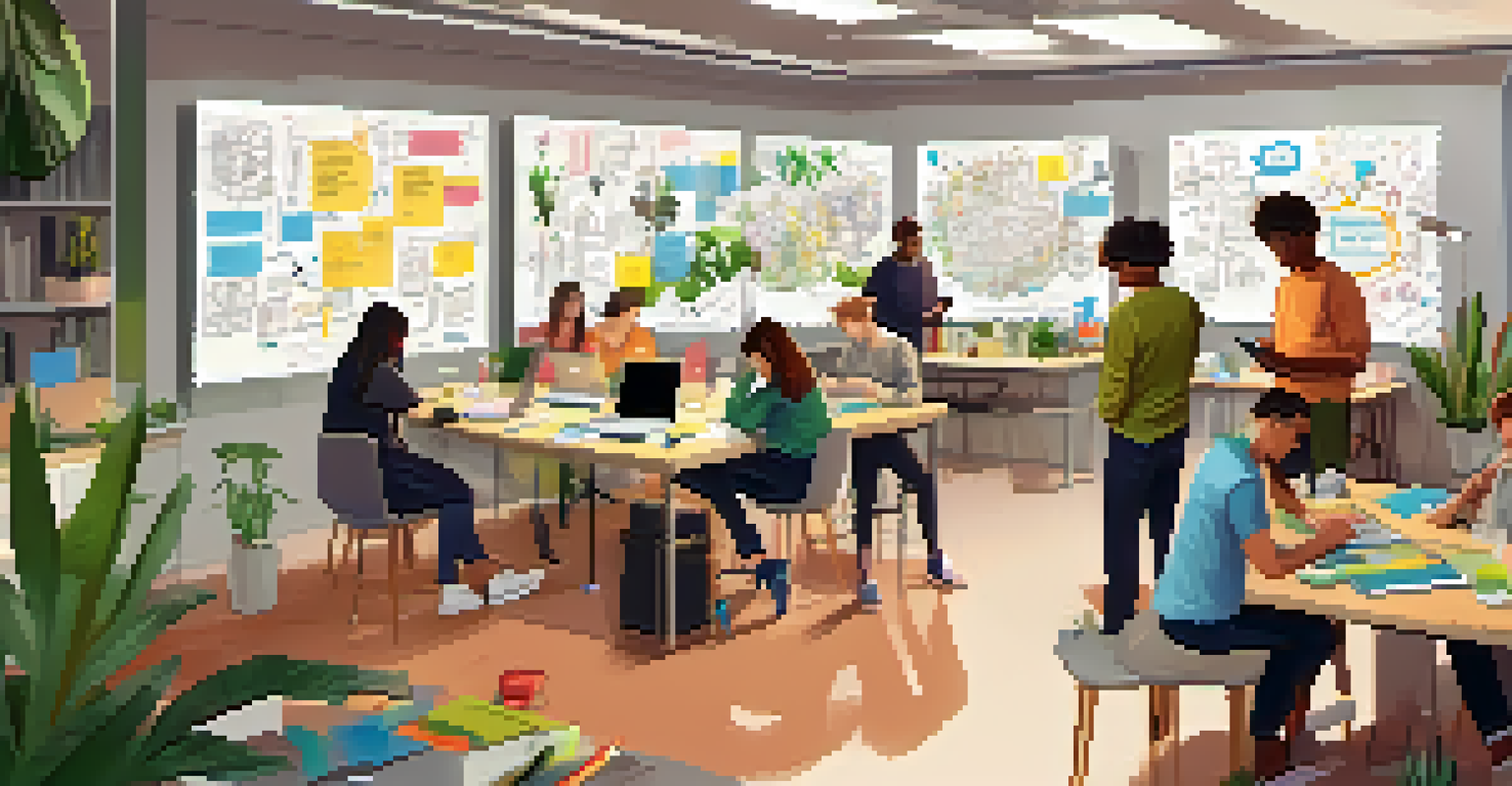The Role of Technology in Fostering Global Learning Communities

Introduction to Global Learning Communities and Technology
In today's interconnected world, global learning communities are more prominent than ever. These communities bring together learners and educators from diverse backgrounds, fostering a rich exchange of ideas and knowledge. Technology plays a crucial role in this dynamic, enabling seamless communication and collaboration across borders.
Education is the most powerful weapon which you can use to change the world.
With tools like video conferencing, social media, and collaborative platforms, individuals can engage with others in real-time, regardless of location. This access not only broadens perspectives but also helps build relationships that transcend cultural barriers. As technology continues to evolve, so does the potential for global learning communities to flourish.
Ultimately, the intersection of technology and education invites questions about how we can leverage these tools to enhance our learning experiences. By understanding the role of technology, we can better appreciate its impact on our global educational landscape.
How Technology Bridges Geographic Divides
One of the most significant advantages of technology is its ability to bridge geographic divides. Previously, students in remote areas faced challenges in accessing quality educational resources and experienced isolation from global conversations. However, with the rise of online learning platforms and digital classrooms, learners can now connect with educators and peers across the globe.

For example, a student in a rural village can participate in a live seminar hosted by a professor in another country, gaining insights that would have been impossible just a few years ago. This not only enriches their learning experience but also fosters a sense of belonging to a larger community. The technology thus acts as a powerful equalizer in education.
Technology Bridges Global Learning
Technology enables learners from diverse backgrounds to connect and collaborate, breaking down geographic and cultural barriers.
As we continue to embrace these tools, it's essential to recognize their potential to transform not just individual lives but entire educational systems. The ability to connect and collaborate with others worldwide is a game-changer in fostering diverse learning environments.
The Power of Collaboration Tools in Learning
Collaboration tools are at the heart of global learning communities, allowing individuals to work together effortlessly. Platforms like Google Workspace, Microsoft Teams, and Slack enable users to share documents, brainstorm ideas, and manage projects in real-time. This collaborative spirit enhances the learning process, as students can learn from each other's strengths and perspectives.
Technology will never replace great teachers, but technology in the hands of great teachers is transformational.
For instance, a group project can involve students from different continents, each bringing unique insights to the table. This not only enriches the content but also teaches valuable skills such as teamwork and cross-cultural communication. Such experiences prepare students for the global workforce, where collaboration is often essential.
In essence, these tools foster a sense of community, even among those who have never met face-to-face. As technology continues to develop, the possibilities for collaboration and shared learning grow, making education a truly global endeavor.
Enhancing Accessibility Through Technology
Accessibility is a key consideration in education, and technology plays a vital role in ensuring that all learners can participate. With resources such as online courses, video lectures, and audiobooks, students with disabilities or those in underserved areas can access quality education. This democratization of learning empowers individuals who may have previously faced barriers.
Moreover, assistive technologies like screen readers and speech-to-text software make it easier for learners with specific needs to engage fully in their educational journeys. By prioritizing accessibility, we not only enhance individual experiences but also enrich the learning community as a whole.
Collaboration Tools Enhance Learning
Platforms like Google Workspace and Microsoft Teams foster teamwork and cross-cultural communication among students worldwide.
As we continue to innovate, it's crucial to remember that technology should serve as a bridge, not a barrier. Ensuring that everyone can access educational resources is vital for fostering inclusive global learning communities.
Using Social Media to Build Learning Networks
Social media platforms have transformed how we connect and share information, providing unique opportunities for learning. Educators and students alike can leverage platforms like Twitter, LinkedIn, and Instagram to share resources, insights, and experiences. This creates vibrant communities where knowledge flows freely and discussions thrive.
For example, educators can join Twitter chats focused on specific subjects, exchanging ideas and best practices with colleagues worldwide. Students can follow thought leaders in their fields, gaining inspiration and access to a wealth of knowledge. Such interactions foster a culture of continuous learning and professional development.
Ultimately, social media helps break down traditional barriers to education, enabling learners to build networks that can support their growth. By actively participating in these online communities, individuals can enhance their learning experiences and contribute to a broader dialogue in their fields.
The Role of Online Courses in Global Education
Online courses have surged in popularity, offering learners the flexibility to study at their own pace while connecting with a global audience. Platforms like Coursera, edX, and Khan Academy provide access to high-quality educational content from renowned institutions. This opens doors for individuals who may not have had the opportunity to attend traditional brick-and-mortar schools.
These courses often encourage interaction among participants, fostering a sense of community as learners engage in discussions, share insights, and collaborate on projects. The ability to learn alongside individuals from different cultures enhances the educational experience, broadening perspectives and encouraging critical thinking.
Accessibility Empowers All Learners
Assistive technologies and online resources ensure that education is accessible to individuals with diverse needs and backgrounds.
As online education continues to evolve, it becomes increasingly clear that these courses are not just a trend but a vital component of global learning communities. They offer an accessible means for lifelong learning, equipping individuals with the skills and knowledge needed to thrive in an ever-changing world.
Challenges and Considerations in Technology-Driven Learning
While technology offers numerous benefits to global learning communities, it's essential to acknowledge the challenges that come with it. Issues such as digital divide, data privacy, and the potential for distraction can hinder the effectiveness of technology in education. Not all learners have equal access to devices and high-speed internet, which can create disparities in participation.
Additionally, as education increasingly moves online, concerns about data security and privacy become paramount. Educators and institutions must prioritize protecting students' information while ensuring a safe learning environment. Balancing these challenges requires ongoing dialogue and collaboration among stakeholders.

Ultimately, addressing these challenges is crucial for maximizing the benefits of technology in global learning communities. By being mindful of potential pitfalls, we can create more inclusive and effective educational experiences for all learners.
The Future of Technology in Global Learning Communities
The future of technology in global learning communities is filled with promise and potential. As innovations such as artificial intelligence, virtual reality, and blockchain technology emerge, they will likely reshape how we learn and connect. Imagine immersive virtual classrooms where students from around the world can collaborate in real-time, or AI tutors that provide personalized support based on individual learning styles.
As we look ahead, it's vital to remain adaptable and open to new ideas, embracing the opportunities that these advancements bring. By actively engaging with emerging technologies, we can enhance the educational experience and foster deeper connections within our global communities.
In conclusion, the role of technology in fostering global learning communities is both significant and transformative. By harnessing these tools effectively, we can create a more inclusive, engaging, and enriching educational landscape for learners everywhere.